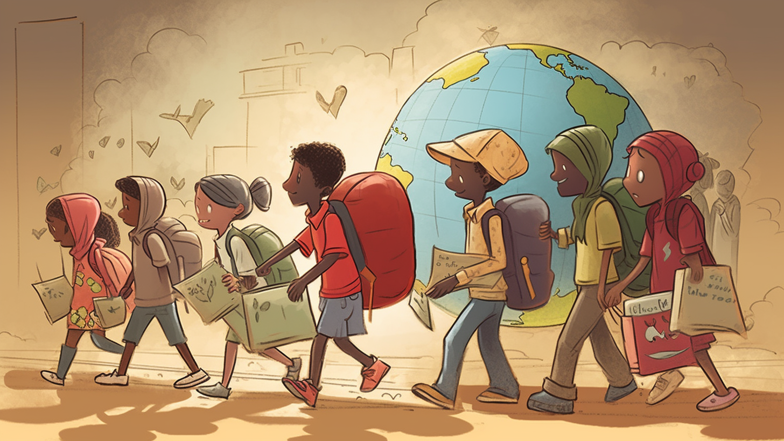
This article explores the impact of pandemics on global education, including the unique challenges faced by educational systems worldwide and potential opportunities for innovation and growth. From disrupted curriculum to increased online learning, this timely piece provides an important perspective on the current state of global education.
Disrupted Curriculum and Learning Loss
The COVID-19 pandemic has thrown a wrench into the typical academic year in many countries, destabilizing schooling systems and creating gaps in learning opportunities for students. School closures, longer summer breaks, and delays in the start of the academic year have led to lost instruction time that had already been anticipated, further shortening the amount of time available for learning.
A report by UNESCO found that over 1.5 billion learners around the world, equivalent to over 90% of the world's student population, have been impacted by school closures due to the pandemic. As a result, students have experienced significant learning loss, which is likely to have long-term consequences.
Although many schools have shifted to online and other forms of remote learning, the quality of instruction varies significantly from region to region. For learners without adequate resources, such as devices or internet access, remote learning is not a feasible option, which could widen the existing learning gap even further.
Moreover, even when students have access to online resources, online learning relies on a high level of self-motivation, organization, and discipline, which not all students possess. The result has been varying levels of engagement and success, which could continue to have repercussions even when classrooms finally open again.
Inequities in Education
COVID-19 has exposed the pre-existing inequities in education systems, particularly in access to technology and resources. Developing countries and low-income families have been disproportionately affected by the closure of schools and the shift to remote learning.
According to a study by UNICEF, nearly one-third of the world’s poorest children do not have access to remote learning, which has left many students behind. Additionally, female students are more likely to leave school early to provide childcare or take on other domestic responsibilities during the pandemic, exacerbating the gender gap already present in education.
The impact of the pandemic on low-income families and developing countries could be long-lasting. Students who miss out on education opportunities will have reduced prospects for earning a livelihood or participating meaningfully in the economy in the future. Closing the COVID-19 education gap will require significant investment in education.
Potential Opportunities for Innovation and Growth
The pandemic has created a significant disruption in the traditional education system. Educators have been forced to think outside of the box to provide quality education, which has resulted in new and innovative learning methods.
For instance, online learning has become a popular alternative to the typical classroom for many students. Educators have been forced to adapt their curriculums to fit into the online environment, creating new and engaging ways to help students learn.
Additionally, the pandemic has driven many educational institutions to invest in improving their online education infrastructure, which could have long-term benefits for the education system. Distance education could be a viable solution for students in rural or remote areas who might otherwise miss out on education opportunities.
Furthermore, the pandemic has prompted a shift away from standard testing, with many universities and colleges adopting alternatives such as a portfolio-based assessment. Testing has long been criticized for its narrow focus on certain aspects of learning and the potential biases inherent in its design. This shift towards more holistic approaches to assessment could give students more opportunities to demonstrate their learning and could potentially promote a more diverse range of educational trajectories.
Conclusion
The COVID-19 pandemic has exposed the pre-existing inequities and weaknesses in the education system around the world. But as with any crisis, the pandemic has also presented opportunities for innovation and growth.
While the pandemic has disrupted learning, there is hope that it could lead to a more flexible, equitable, and forward-thinking education system. As schools and colleges adapt to remote learning and new assessment methods, they have the opportunity to create more inclusive and diverse educational environments that prepare their students for the challenges of the modern world.
As society adapts to the new normal, it will be important to recognize and address the short-and long-term impacts of the pandemic on education. Ensuring that all students have equal access to education resources and technologies is crucial to bridging the digital divide and reducing inequities. Only through collective action and investment in education will we be able to create a brighter future for students around the world.
Comments
Post a Comment